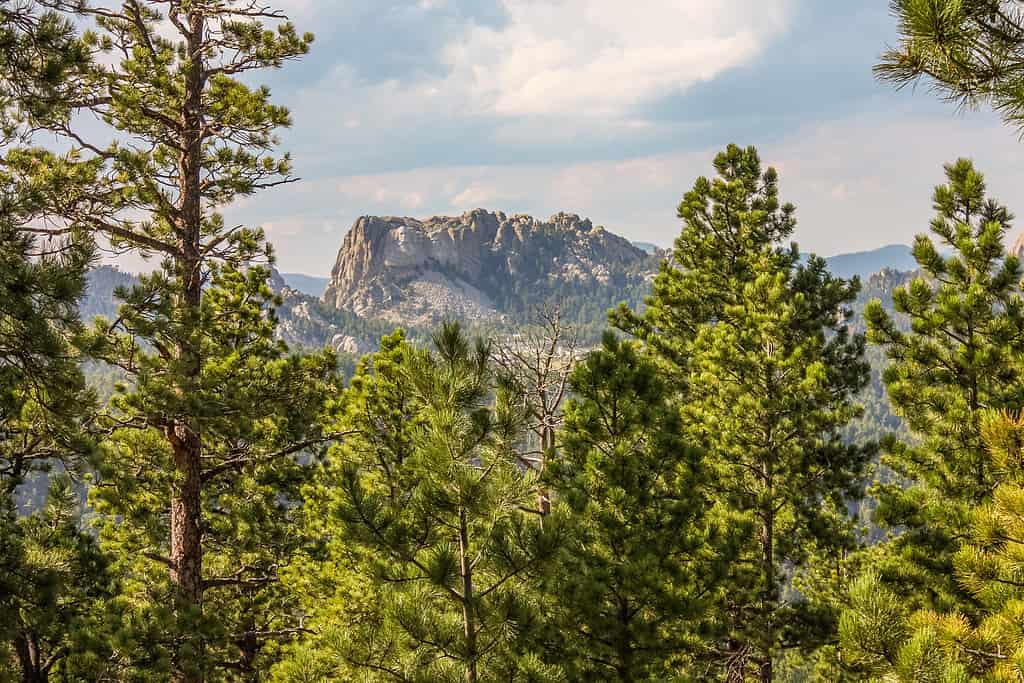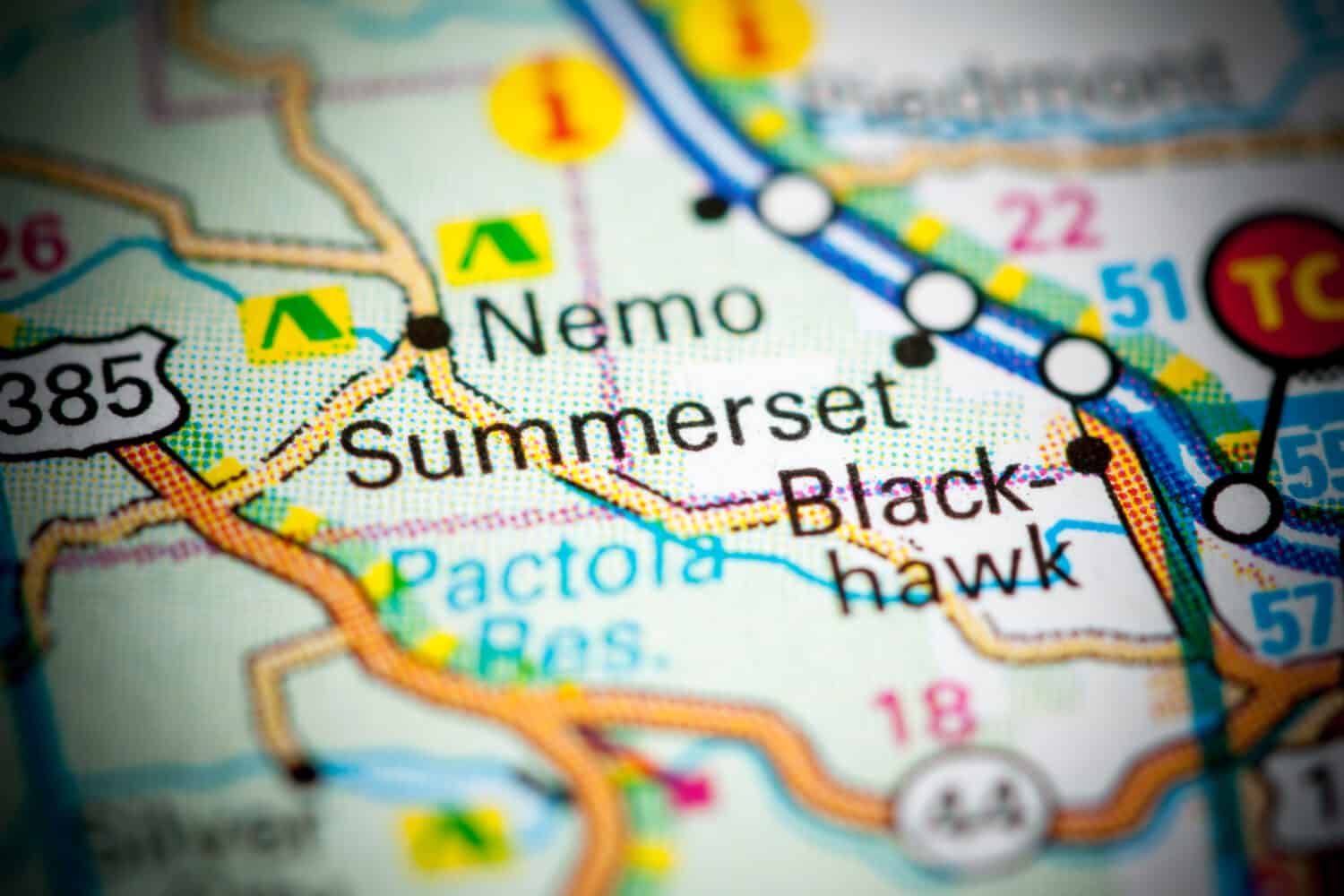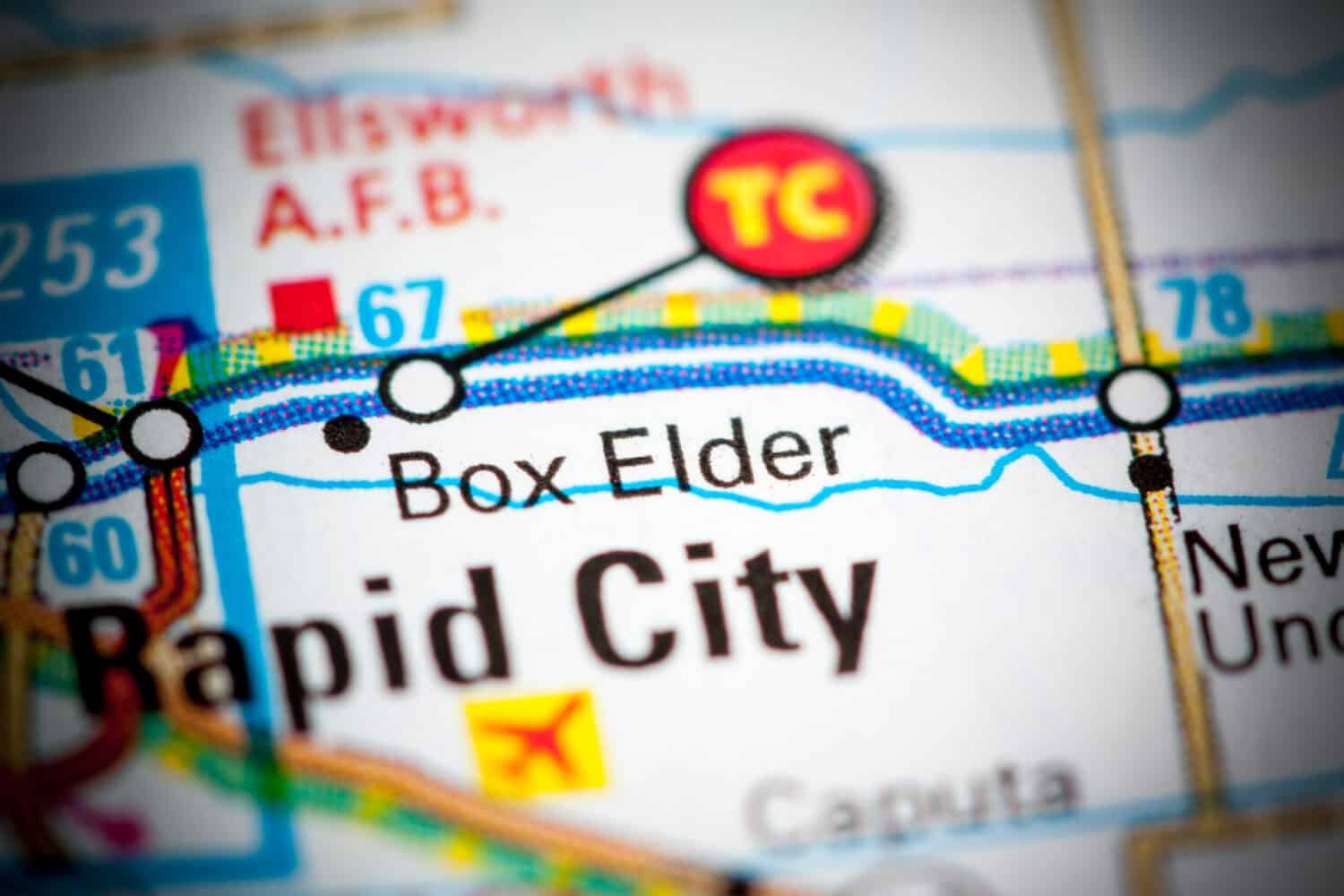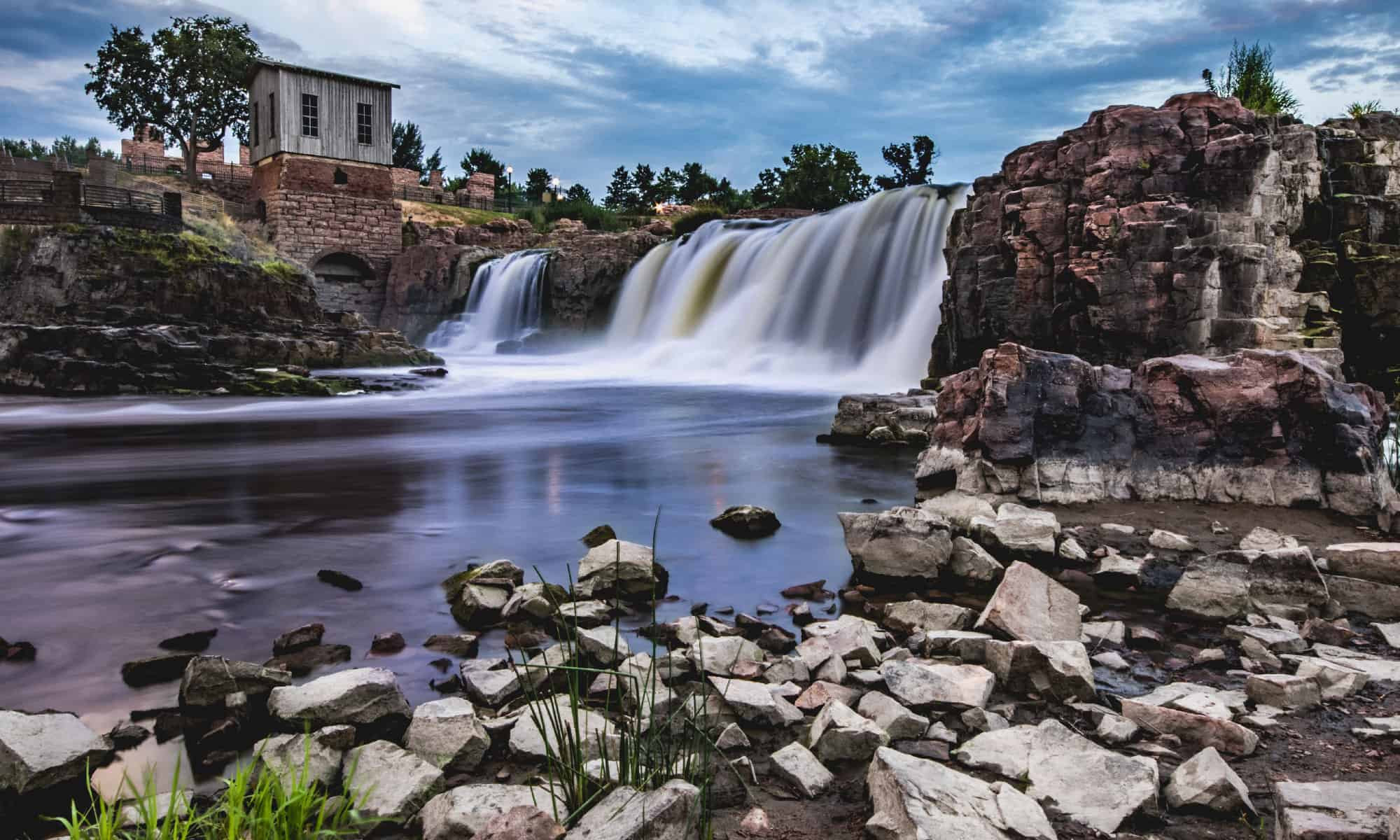
South Dakota is a beautiful place to live, but it’s not as cheap in some areas as you might expect, especially in the seven most expensive mountain towns in South Dakota.
©Ingo70/Shutterstock.com
If you want to live in a mountain town in South Dakota, this list offers a pretty good idea of where not to go. The locations on this list make up the most expensive mountain towns in South Dakota. If you’re looking for a place to live, these seven towns might not be the first places worth checking out.
Mountain towns used to be the place to go to get away from everything. If you wanted to enjoy the scenery and get away from the city, you moved into a beautiful mountain town. Unfortunately, the reality now is that mountain towns are often more expensive than the city. Renting is sometimes limited, leaving you to have to find the money to purchase a house outright.
All information is accurate at the time of writing in October 2023. Information for cost of living comes from 247Wallst. Information for cost of living indexes comes from BestPlaces.
The Best Way to Measure Cost of Living
It’s not always easy to determine how expensive a town or city is to live in. You can look at the average cost of necessities, such as rent, transportation, child care, health care, utilities, and groceries. For some people, that is all they need to know.
If you work remotely or have a high-paying job that you’ll keep when you move to a new area, then the information above might be all you care about. Some people may even only consider the big cost, which is housing.
However, if you’re like hundreds of thousands of people living on minimum wage, or just a little above it, the information above doesn’t explain much. For example, consider moving from somewhere like Colorado, where the minimum wage is over $13. Going from a place where the cost of living is $54,000 to Tennessee, where the cost of living is $42,000 sounds like a good deal.
However, that’s not necessarily the case. The cost of living in Colorado is double what the gross annual minimum wage would give you working full time. This is bad, but it’s still not as bad as Tennessee, where the cost of living is 2.8 times higher than the gross annual minimum wage.
This is why you need to consider the income in the area and compare it to the cost of living. This gives you more of an accurate idea of how difficult it is to live in an area based on the pricing.
While not as extensive as comparing average incomes and cost of living, you can also look at cost of living indexes. These give you an idea of how expensive an area is to live in compared to the rest of the United States. You may still need to ensure you understand the local wages, but it tracks cost changes and averages better than just a standard cost of living dollar amount.
How Expensive is South Dakota Compared to the Rest of the US?
South Dakota is a relatively cheap place to live. It’s considered to cost roughly six percent less than the national average. Housing itself is eight percent less than the national average. Utilities are 10 percent less than the national average.
Even basic necessities, like food and groceries, cost around seven percent lower than the national average. Still, it’s not the cheapest place to live. South Dakota only ranks 22nd in the lowest cost of living of all 50 states.
As of 2023, a single person would need around $53,000 a year to live comfortably. You can live on lower, usually $33,000 is the standard in the state, but you’d often be living paycheck-to-paycheck. Of course, that price changes based on where in the state you’re planning on living.
The Most Expensive Mountain Towns in South Dakota
Though it’s fairly cheap to live in South Dakota, you still want to be careful about where you’re planning on moving. If you’re working on a fairly tight budget, or want to live a little more inside of your means, then these seven towns are the ones you likely want to avoid.
1. Keystone

Mount Rushmore National Memorial is centered on a colossal sculpture carved into the granite in the Black Hills in Keystone, South Dakota
©Ultima_Gaina/iStock via Getty Images
Keystone is located in Pennington County, South Dakota, it’s the home of Mount Rushmore and is located in the Black Hills. It’s the most expensive mountain town in South Dakota.
For a single person, the estimated cost of living is around $35,056 a year. That’s actually higher than the average cost of living in South Dakota. Thankfully, it’s still less than the national average of $38,433.
For a family of four, the number jumps up to $82,240 a year. As with a single person, it’s above the average for the cost of living in South Dakota, but it manages to stay a little below the national average. Housing, health care, and child care tend to be your biggest cost factors, as they all rank above the average in South Dakota.
However, while the cost of living is pretty low, you have to look at the cost of living index to get a more accurate idea. Keystone has an index rating of 107.6. This means that when you look at all the average prices vs. the average income of Keystone compared to the rest of the US, it’s 7.6 percent higher than the average. It’s also 17 percent higher than the South Dakota average.
This is a hard town to live in if you’re working locally. With the minimum wage being $10.80 for non-tipped workers and $5.40 for tipped workers, many people aren’t meeting the $35,056 estimated cost of living.
In fact, the median income for Keystone residents is nearly $23,000, which is much less than what an individual needs to survive in the town. This means that unless you have a very good job lined up, or you work online for higher wages than South Dakota’s minimum wages, it’s not an easy town to live in.
This could be why there are only about 250 people in the town. The poverty rate has also sky-rocketed in the last decade, though it’s starting to dip again to about 30 percent.
2. Hill City

Hill City is also in Black Hills, making it close to Mount Rushmore.
©Allen Allnoch/iStock via Getty Images
The next most expensive mountain town in South Dakota is Hill City. Hill City is also near Black Hills. Like Keystone, the average cost of living is $35,056 a year. The cost for a family of four is also the same at $82,240. This puts it a little higher than South Dakota’s average.
Housing isn’t really the issue. A standard house in Hill City is almost $50,000 less than the national average. Even rent is eight percent less in Hill City than in the rest of the US. Transportation costs are also less. However, health care, child care, and taxes are pretty high, which is what brings up the cost of living.
Despite the average cost of living being the same price as Keystone, Hill City has a lower cost of living index. It’s 105.8. This still makes it 5.8 percent higher to live in Hill City than the rest of the US on average. It’s about 15.6 percent higher than the average for the rest of South Dakota as well.
The minimum wage is the same as the rest of South Dakota. However, interestingly, the median income is much higher than Keystone’s. Instead of under $25,000, the median income is closer to $29,000 for individuals. The poverty rate is almost nonexistent, ranking well below five percent.
3. Hermosa

The eastern gateway to Black Hills is said to be Hermosa.
©Everett Collection/Shutterstock.com
Hermosa is in Custer County, South Dakota. It’s still located in the Black Hills area, but much more in the foothills. While it’s not the most mountainous town you could pick in South Dakota, it does still have pleasant hills and mountains on the horizon.
The average cost of living for a single adult is $36,975 a year. This is much higher than the other two mountain towns on the list. If you were just looking at the cost of living, then Hermosa would rank as the most expensive mountain town in South Dakota.
Interestingly, while it’s almost $2,000 more for a single person to live in Hermosa than the other two towns mentioned so far, for a family of four, the price is $82,938. This is only a $700 difference. It’s not entirely clear why this is the case, but it’s something worth noting.
However, when you look at the cost of living index, you see that it’s not as high, despite the high initial cost of living. Hermosa, while still above the US average, ranks at 104.9. That puts it a little below Hill City and Keystone. This means it’s still roughly 4.9 percent higher than the US average and 14.9 percent higher than South Dakota’s average.
Most of the price comes down to health. It ranks about 45 percent higher than the average cost of health care in the nation. Housing is also a little expensive, but it’s only six percent higher.
In Hermosa, the median income is $27,000. There are 400 or so people in the town. The poverty rate has held steady at 10 percent for the last few years.
4. Summerset

10 miles north of Rapid City is where you’ll find Summerset.
©SevenMaps/Shutterstock.com
Summerset, South Dakota is as close to the ideal state average as you can get in a mountain town. The cost of living is roughly $33,261. With South Dakota’s average cost of living being $33,761, Summerset is only a few hundred dollars more expensive. Even the index shows this. The cost of living index is 100.1.
As you increase your family size, the price difference between Summerset and the other towns so far is even more obvious. For a family of four, the annual total cost is $75,774. Health care and child care are higher than average in South Dakota, but cheaper than the national average. Every other category is either on par with the South Dakota averages, or a little cheaper.
Housing is pretty expensive in the area. Rent, based on the median, costs $150 more a month than the national median. Houses are $18,000 more expensive as well. Buying a house might be the way to go if you’re looking to move into the area. Only 14 percent of all houses in Summerset are rent-based.
Unfortunately, there aren’t a lot of jobs in Summerset itself. Surveys show that 98 percent of people living in Summerset commute out of the town. The commute is only 20 minutes long on average, but if you don’t want to drive to work, then this might be a town worth avoiding.
The population here is a lot higher than the other towns so far. This could be due to how close it is to Rapid City. There are just over 3,000 people. The median income is $40,000. Again, this could be due to the closeness to Rapid City as there are more job choices and chances for high-income jobs. The poverty level is at five percent.
While that’s the theory, interestingly enough, the median income for Summerset is $10,000 more than that at Rapid City. It’s possible that people who make enough money choose to commute and move out of the city, but there’s not enough information to know for certain.
The high median income combined with the fairly standard cost of living means that although it’s an expensive town, it may be well within the means of many who choose to live there.
5. Custer

Needles Highway in Custer State Park is a great place to visit if you live in the area.
©keeweeboy/iStock via Getty Images
Custer is the first town on this list that ranks below the national average. Its cost of living index is 98.5 This means that the cost of living is 1.5 percent lower than the rest of the US, and it ranks 9.3 percent less than the rest of South Dakota as well.
Despite this, the up-front cost of living is higher. It’s tied for first with Hermosa in South Dakota for the most expensive city based on the minimum income you need to live comfortably. The cost is $36,975 for a single person and $82,937 for a family of four.
The housing costs are pretty cheap. They are over $50,000 cheaper than the national median home value. Like the rest of South Dakota, housing costs the most per national average at 45 percent higher than most of the rest of the United States. Child care is also quite a bit higher than it is in the rest of South Dakota. Groceries and health are also a little more expensive. Everything else is below the national average, however.
There are nearly 2,000 people that live in Custer. The median income is also somewhat low despite the index at $30,000. Poverty is rather high because of the low income and it sits at 17 percent or so.
6. Box Elder

The town of Box Elder sits just outside of Rapid City, the next location on this list.
©SevenMaps/Shutterstock.com
For all the basic necessities, the yearly expense for a single adult is $34,883 a year. That jumps up to $81,615 for a family of four. The index is 95.9. Health is the only category that is above the national average. Groceries sit right at the national average earning an index of 100.
Like the rest of the most expensive mountain towns in South Dakota listed so far, child care, health, and taxes are fairly high in Box Elder compared to other parts of South Dakota.
While houses are cheap, $50,000 less than the national median, they aren’t always easy to get. Over half of the homes in Box Elder are rented. Thankfully, even the rent is cheap, averaging less than $1,000 a month.
After 2019, the median income in Box Elder jumped. It went from right at $25,000 to $33,000. This makes the median income just a little higher than that of Rapid City. Poverty has also been decreasing in the town, going from 13 percent in 2017 to 6 percent in 2023.
7. Rapid City

Though not technically a town, Rapid City is located in the mountains.
©Jacob Boomsma/iStock via Getty Images
If you’ve decided that maybe a city is a better option than a small mountain town, think again. Rapid City likes to promote itself as a small town (and in fact ranked as one of the best small towns to visit in 2023), but in reality, it’s closer to a city. It has a population of over 73,000. This means it has the second-largest population in all of South Dakota.
It does have to be said that while Rapid City has a fairly large population and does count as more of a city than a town, it has more of a small-town feel. Even looking at the picture above, it strikes you as more of a growing town rather than a busy city.
Though cities are often thought to have much higher costs of living than smaller towns, Rapid City doesn’t follow this trend. The cost for a single person in Rapid City is $35,056, which is the exact same as Keystone and Hill City with much smaller populations. A family of four costs the same as well at $82,240.
Despite the price, the cost of living index is only 95.6. Part of this is due to the income. The other part is likely due to transportation. Because everything is so close together, there’s not as much of a need for a vehicle.
The index for transportation is 74, which means it’s almost 30% less than the US average. Taxes, child care, and health care do rank higher than South Dakota’s averages still. Groceries are the only thing higher than the national average, and only by 0.1 percent.
The median income is a little over $32,000. The poverty rate was climbing for a while, but in the last few years, dropped to a new low. It’s the lowest the poverty rate has been since at least 2010. It now sits below 15 percent.
Summary of the Most Expensive Mountain Towns in South Dakota
| Rank | Town | Elevation | Cost of Living for One Person | Index Ratio |
|---|---|---|---|---|
| 1 | Keystone | 4,554 feet | $35,056 | 107.6 |
| 2 | Hill City | 5,013 feet | $35,056 | 105.8 |
| 3 | Hermosa | 3,340 feet | $36,975 | 104.9 |
| 4 | Summerset | 3,632 feet | $33,261 | 100.1 |
| 5 | Custer | 5,315 feet | $36,975 | 98.5 |
| 6 | Box Elder | 3,045 feet | $34,883 | 95.9 |
| 7 | Rapid City | 3,356 feet | $35,056 | 95.6 |
Thank you for reading! Have some feedback for us? Contact the AZ Animals editorial team.








